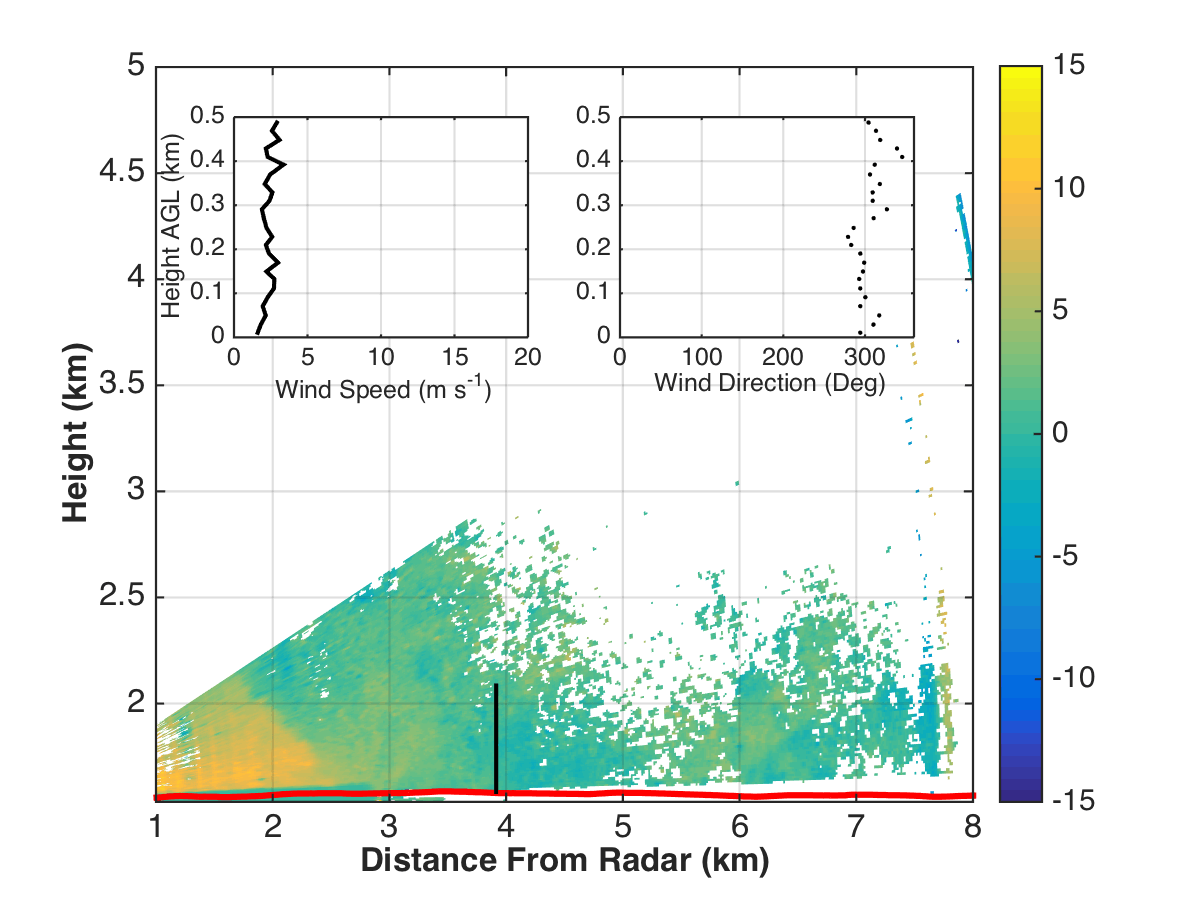As seen from the radial velocity field, multiple small vortices drifted to south - southwest for a time, possibly associated with a boundary of some sort. The vortices are seen below as couplets of inbound (blue) and outbound (red) radial velocities. For clarity, five vortices have been circled in the static image below:
It is interesting to note that four of vortices are cyclonic and one is anticyclonic. An animation (over the course of ~ 15 minutes) of the above radial velocity field shows the vortices movement as well as their expansion and decay. The largest in size had a delta-v across the circulation of about 14 m/s. The BAO tower is identified as the magenta "+" near the top of the domain.
The vortices were also evident in the reflectivity field, with the largest even displaying a weak echo region at the center (typically seen in larger vortices, such as dust devils and tornadoes):
Special thanks to Rich Krupar for helping with the animations and data conversions.





















